
Use the engineering design process to create a solution to problem involving magnets?
- Subject:
- Mathematics
- Science
- Material Type:
- Lesson Plan
- Provider:
- BetterLesson
- Date Added:
- 12/01/2022

Use the engineering design process to create a solution to problem involving magnets?
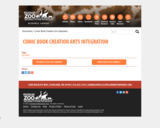
How can you use art to share an experience with someone who was not present at the Vet Bag program? This activity is designed to start your students in recognizing themselves as scientists and thinking critically about problem-solving. The goal is to teach concepts through arts integration and to encourage creativity. As with all lessons provided, please feel free to adapt them according to your students’ abilities. You may find it more successful to lead activities and discussions as a whole group as opposed to having your students work in small groups. Certain scientific vocabulary may or may not be appropriate for your students’ level of understanding. Take these ideas, make them your own and your students will have a greater chance at success.
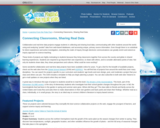
This article describes six collaborative and real data projects that engage elementary students in collecting and sharing local data and communicating with students across the country and world.

A group of female teachers were inspired to start The Girls Rock Science, an enrichment program are to foster scientific curiosity and boost girls' confidence. In this episode, observe the group members completing an activity in which they use playdough to visualize the relative sizes of planets. [5:23]

What do you know about genetic modification? Is genetic modification helpful or harmful? This unit will help to develop student thinking about genetic modification and food security issues around the world by discussing CODEX, an international set of rules governing food safety and regulation, and how those rules work in various countries. The case for labeling genetically modified foods has raised controversy here and abroad. This set of lessons attempts to look at the differences between genetically modified and non-genetically modified foods, and the case for and against mandatory labeling of foods across the world. This unit features 5 lessons and 11 file.s. Lessons are aligned to NGSS.
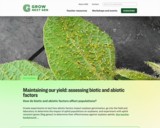
Create experiments to test how abiotic factors impact soybean germination, go into the field and laboratory to determine the impact of aphid populations on soybeans, and experiment with aphid resistant genes (Rag genes) to determine their effectiveness against soybean aphids. This unit features 3 lessons and 10 files. Lessons are aligned to NGSS.
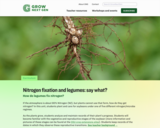
If the atmosphere is about 80% Nitrogen (N2), but plants cannot use that form, how do they get nitrogen? In this unit, students plant and care for soybeans under one of five different nitrogen/microbe regimes.
As the plants grow, students analyze and maintain records of their plant’s progress. Students will become familiar with the vegetative and reproductive stages of the soybean (more information and pictures of these stages can be found at the OSU crop extensions sites). Students keep records of the dates in which they observe these reproductive transitions. This unit features 2 lessons and 7 files. Lessons are aligned to NGSS.

Are you aware of more sustainable products? Do you try to buy more sustainable products when you have the choice? This unit features 2 lessons and 5 files. Lessons are aligned to NGSS.
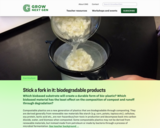
Grades 7-12. Compostable plastics are a new generation of plastics that are biodegradable through composting. They are derived generally from renewable raw materials like starch (e.g. corn, potato, tapioca etc), cellulose, soy protein, lactic acid etc., are non-hazardous/non-toxic in production and decompose back into carbon dioxide, water, and biomass when composted. Some compostable plastics may not be derived from renewable materials, but instead made from petroleum or made by bacteria through a process of microbial fermentation. This unit features 3 lessons and 2 files. Lessons are aligned to NGSS.
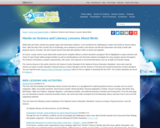
This article provides links to lessons and units about birds, bird characteristics, and penguins. Ideas for literacy integration are included, and all lessons are aligned to national standards.
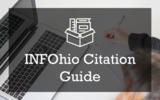
The INFOhio Citation Guide includes a variety of websites, tutorials, documents, and videos for grades 6-12 to support students as they cite sources and provide attribution for resources and images used during the research process.
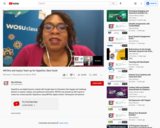
HyperDocs are digital lessons created with Google Apps for Education that engage and challenge learners to explore, analyze, and synthesize information. INFOhio has teamed up with inquiry to create two content-specific HyperDocs using INFOhio digital content. Participants will advance down the court by learning how to use all-star content, and proven powerhouse practices for a common goal. Discover how to use the inquiry process and the HyperDoc template to create your own lessons using quality INFOhio content and strategies that will connect students with critical thinking and collaboration for a winning outcome!

District/Building INFOhio Coach, Karen Gedeon, from Cuyahoga Falls City Schools created these activities for middle school students to begin exploring ISearch.
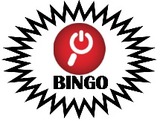
Revised with assistance from INFOhio Users Council members, ISearch BINGO can be broken into 3 separate activities which are listed below. Review the activities, and then download and print the documents you need.

INFOhio Users Council member and Ohio school librarian Amy Keister from Louisville City Schools created this activity perfect to get middle school students started in ISearch for exploration and research. Download and print to reproduce.

INFOhio Users Council members created this Jigsaw puzzle about Famous Ohioans. Students use ISearch to find the answers (and cite their sources) to the questions, then work together in groups to solve the Jigsaw Puzzle.

Students use INFOhio's ISearch, Go! Ask and Achieve and Ohio Means Jobs to research and to create and to deliver a presentation on a career.
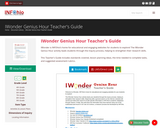
IWonder is INFOhio’s home for educational and engaging websites for students to explore! The IWonder Genius Hour activity leads students through the inquiry process, helping to strengthen their research skills.
This Teacher's Guide includes standards covered, lesson planning ideas, the time needed to complete tasks, and suggested assessment rubrics.
Use these additional documents:
https://www.infohio.org/document-library/item/iwonder-genius-hour-worksheet-editable-version
https://www.infohio.org/document-library/item/iwonder-genius-hour-worksheet-pdf
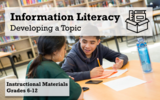
This content pack is intended to be a way for educators to discover new resources and lessons for teaching information literacy skills in grades 6-12. The instructional materials contained within this pack were selected to support students as they grow and develop the following skills. Develop a topic for research. Explain research goals. Formulate essential questions and questions to guide research. Reflect on prior knowledge.
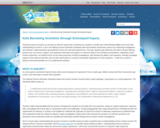
This article provides an overview of scientific inquiry and how citizen science programs run by the Cornell Lab of Ornithology provide opportunities for inquiry about birds.